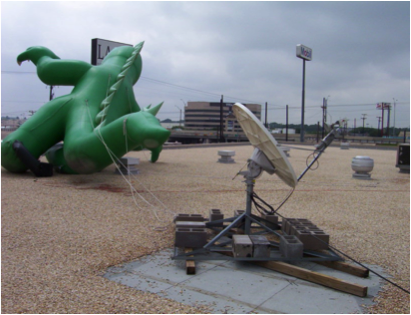 Digi International
Digi International
May 11, 2015
You already know how ubiquitous cellular is, but did you realize its going above and beyond the device you have in your hand? Lower costs and reliable connections are driving cellular adoption in M2M and Internet of Things applications. According to Berg Insights, there are already around
187 million cellular connected M2M devices. Here are some of the top reasons our customers choose to go with a cellular solution for their M2M and IoT solutions.
1. Ubiquitous Coverage
Cellular coverage is nearly everywhere. A recent ITU report suggests that the total number of global mobile subscriptions is approximately 6.8 billion – nearly the same as the estimated world population.
Cellular devices can be deployed anywhere that is in network coverage. It can also be deployed in mobile applications where devices need to stay connected no matter where they are at (e.g. fleet/asset tracking), even across wide geographical areas. Additionally, there is a growing population of picocell deployments that are enabling improved in-building coverage for shopping centers, large corporate buildings, subway stations, etc.
2. Easy Deployment
Cellular devices can be pre-provisioned by distributors or system integrators before shipment to the end-customer, so they connect to the network right out of the box. No end user provisioning is required (e.g. setting up security to connect to a Wi-Fi access point)
Cellular devices are not dependent on IT infrastructure (e.g. Wi-Fi access point, corporate Ethernet, ...). Deploying Wi-Fi or Ethernet connected devices inside environments like hospitals or shopping centers can be difficult due to IT teams not allowing 3rd party devices on their network. What if the IT network is updated or security settings change? Cellular connected devices ensure you retain complete control over your device.
3. Lower Support Costs
With cellular, the infrastructure is owned and managed by the cellular carriers, not the end-customer or product supplier. This means no upfront infrastructure costs and reduced support costs. Because cellular connectivity does not depend on end-user managed infrastructure (Wi-Fi, Zigbee, etc.), product suppliers do not have to provide helpdesk support services for basic connectivity issues (e.g. "My device wont connect to the access point. The security settings are not working...."). Instead of deploying your own infrastructure, leverage one of the worlds largest communication infrastructures - the cellular network.
4. Improved Reliability
Reliability is critical for many M2M applications, especially those involving security and real-time monitoring and alerts. With cellular, you are leveraging a robust wireless network used by nearly 1/3 of the worlds population every day. Cellular network outages are rare and if they do occur they are immediately noticed and acted on. Consider a less reliable alternative – a device is connected to a consumer-grade Wi-Fi access point, maintained by the store clerk in a small gas station. If the wireless connection fails, it could go unnoticed for extended periods of time and require manual intervention to resolve.
5. Lower Hardware Costs
Cellular module costs have fallen significantly in recent years. High-volume pricing for data-only modules is approaching sub-$10 for 2G GSM, sub-$20 for CDMA 1xRTT and sub-$30 for 3G UMTS. These price points are enabling a whole new class of devices and applications.
6. Lower Data Costs
Data costs have also fallen significantly. For connected machines that only need to report small amounts of data, connectivity costs can be <$1/month. A vending machines that reports daily inventory clearly doesnt need the same costly data plan as a consumer streaming HD music videos.
7. No Risk of Inflatable Godzilla Ruining Your Network
This isnt a joke. One of our own customers has run into this problem. VSAT requires a satellite typically placed on the top of the building. But what happens when the store manager requests an employee go to the roof and tie up a giant inflatable Godzilla? The store employee probably isnt a wireless communications expert and decides to use the satellite to anchor Godzilla. This can pull the satellite out of the direction it requires to connect – resulting in costly downtime.
Obviously this isnt an epidemic, but with cellular you dont need to worry about the direction your antenna is pointed.
Closing
Many of our customers are realizing the value provided by cellular connected devices today. In addition to providing a secure and reliable connection, it enables them to manage and monitor their network from anywhere. Heres an example of how our customer, Monster Media, is using cellular to connect and manage digital signage around the world.